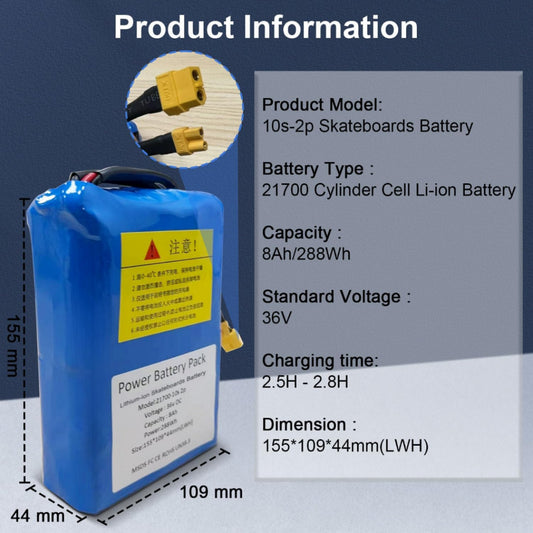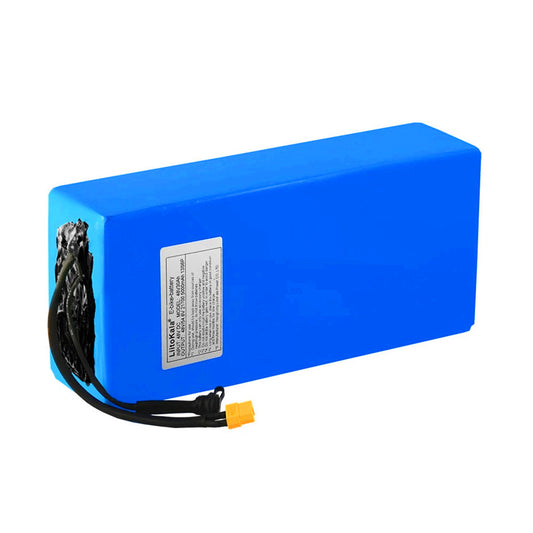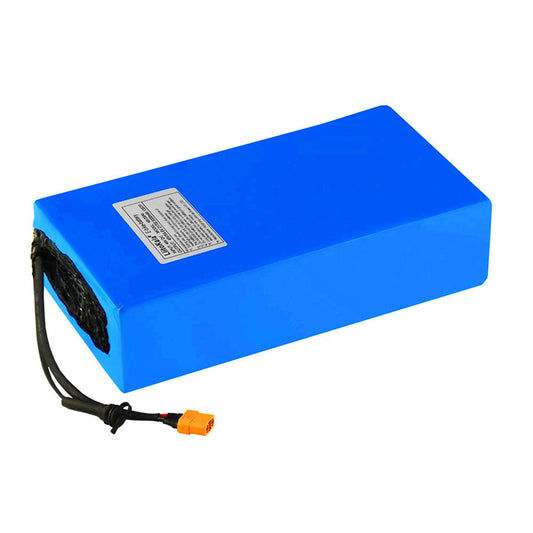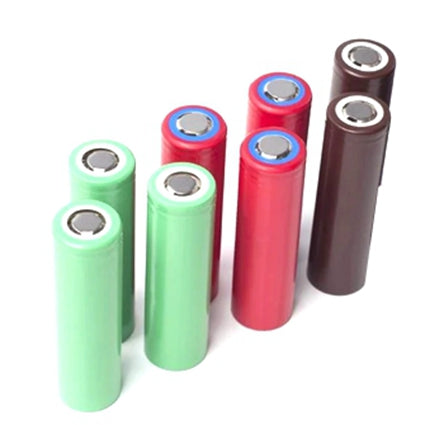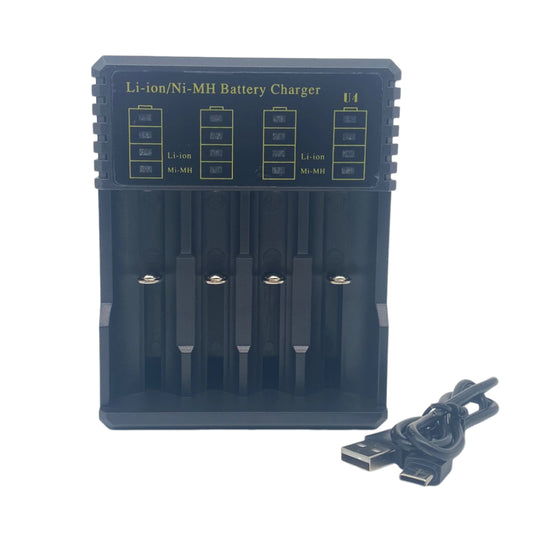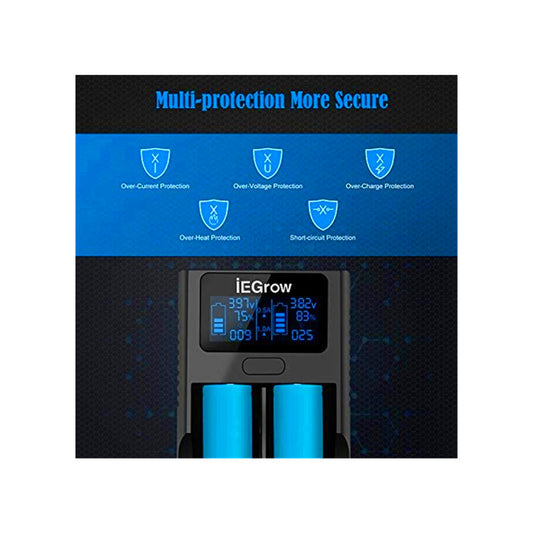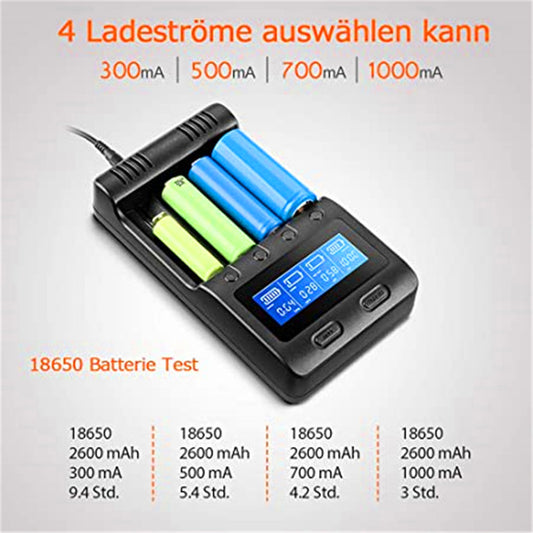Battery corrosion is a common problem affecting your equipment and its performance. Corrosion can lead to power loss and equipment failure if not properly addressed. This guide provides a detailed explanation of the causes of battery corrosion and step-by-step instructions for effective battery cleaning.
What Is Battery Corrosion?
Battery corrosion is the formation of a white, green, or bluish substance on the metal parts of a battery, typically seen on the terminals. This deposit results from chemical interactions between the battery's electrolyte and the metal terminals, often exacerbated by the release of hydrogen gas from the battery. Corrosion can interfere with the battery’s ability to deliver power efficiently and may lead to device malfunctions or damage.
What Causes Battery Corrosion?
-
Leakage of Electrolytes: Damage or wear to the battery casing can allow the internal electrolyte to seep out. This liquid can then react with the metal terminals, resulting in corrosive deposits.
-
Internal Chemical Reactions: The normal operation of batteries, especially those that are lead-acid based, produces gases. When these gases contact the terminals, they can form corrosive substances.
-
Excessive Charging: Overcharging a battery often leads to overheating and the production of additional gases, which accelerates the formation of corrosive materials at the battery contacts.
-
Environmental Temperature Extremes: Severe hot or cold conditions can alter the chemical processes within a battery, promoting the production of gases that contribute to corrosion.
-
Natural Aging and Wear: Over time, the internal components of a battery degrade, making it more susceptible to corrosion as part of its natural aging process.
-
Galvanic Corrosion: This occurs when two dissimilar metals are connected in the presence of an electrolyte, causing one metal (usually the more 'active' one) to corrode.
Proactive care and maintenance can help prevent these issues, thus prolonging the life and efficiency of batteries.
What Do You Need to Clean Battery Erosion Safely?
To clean battery erosion safely, you'll need a few specific supplies that help you effectively remove the corrosion while protecting both the battery and yourself:
-
Purchase high-quality batteries from battery manufacturers: Purchasing high-quality batteries from a battery manufacturer can effectively prevent battery leakage. Battery leakage can cause battery corrosion and damage to electronic devices.
-
Protective Gear: Wear protective goggles and gloves to shield your eyes and skin from corrosive materials and cleaning products.
-
Baking Soda: A versatile cleaner, baking soda neutralizes battery acid and aids in loosening corrosive deposits.
-
Soft Brush: An old toothbrush or a small brush with soft bristles is perfect for gently scrubbing away the corrosion.
-
Anti-Corrosion Grease: Applying a thin layer of petroleum jelly or a similar product can help prevent future corrosion.
-
Acidic Solution: For tough corrosion, using white vinegar or lemon juice can be effective. These acids break down the corrosion without harsh chemicals.
-
Wrench or Pliers: In cases where the terminals are heavily corroded, you might need a wrench or pliers to remove them safely.
Collecting these supplies before starting the cleaning process will help you efficiently and safely remove corrosion from the battery.

How to Safely Clean a Battery?
-
Safety Measures: Ensure that you are working in a well-ventilated area. Wear protective goggles and rubber gloves to shield yourself from harmful substances.
-
Disconnect the Battery: Before cleaning, make sure the battery is disconnected from the device or vehicle. Remove the negative terminal first followed by the positive terminal to prevent any short circuits.
-
Apply the Cleaning Solution: Use an old toothbrush or a small brush to apply the baking soda or acidic solution directly onto the corroded areas of the battery terminals and clamps. Allow these acidic solutions to sit for several minutes to break down the corrosion.
-
Scrub the Corrosion Away: Scrub the affected areas thoroughly to remove the corrosion. The baking soda and acidic solution should make it easier to scrub off the buildup.
-
Wash Off Residue: Once the corrosion is removed, gently rinse the areas with distilled water, making sure not to let the water seep into the battery internals.
-
Dry Completely: Use a dry cloth or paper towel to pat down the cleaned areas, ensuring they are completely dry.
-
Apply Protective Coating: To prevent future corrosion, apply a small amount of petroleum jelly or corrosion-resistant grease to the terminals.
-
Reattach the Battery: Connect the positive cable first, then the negative cable, ensuring each connection is tight and secure.
- Dispose of Waste Properly: Properly dispose of your gloves, clothes, and any other contaminated materials used in the cleaning process.
Following these steps will help ensure that your battery is cleaned safely.
How to Prevent Corrosion on Battery Terminals?
Preventing corrosion on battery terminals is key to ensuring the longevity and efficiency of your battery(18650 batteries, 21700 batteries, etc). Here are some effective strategies:-
Keep the Battery Clean: Regularly clean the battery terminals to remove dirt and grease that can contribute to corrosion. You can wipe the terminals with a clean, dry cloth occasionally.
-
Use Corrosion-Resistant Grease: Apply a thin layer of petroleum jelly or a specially formulated corrosion-resistant grease to the terminals. This grease acts as a barrier, protecting the terminals from moisture and other corrosive elements.
-
Tighten Connections: Ensure that the terminal connections are always tight. Loose connections can lead to increased resistance and heat, which can accelerate the corrosion process.
-
Check for Leaks: Regularly inspect the battery case for cracks or leaks. Any leakage of battery acid can quickly lead to terminal corrosion. If you find a leak, it may be time to replace the battery.
-
Use Anti-Corrosion Washers: Install anti-corrosion washers on the terminals. These washers are typically made from materials like felt and are impregnated with a corrosion inhibitor, providing an added layer of protection.
-
Routine Checks: Periodically inspect the battery and terminals for any signs of corrosion. Catching and addressing corrosion early can prevent it from worsening.
-
Maintain Proper Charge Levels: Keep your battery properly charged; an undercharged or overcharged battery can increase the risk of corrosion. Use a battery charger or maintainer to keep it at optimal levels, especially if not in regular use.
By implementing these preventive measures, you can significantly minimize the risk of corrosion on battery terminals, ensuring your battery performs well and lasts longer.

How to Dispose of Used Batteries?
-
Alkaline Batteries (AA battery, AAA battery, etc.): In many areas, regular alkaline batteries can be safely disposed of with normal household waste. However, it's better to check with your local waste management to see if they recommend recycling.
-
Rechargeable Batteries (NiMH, NiCd, Li-ion, etc.): These should never be thrown in the trash as they contain materials that can be hazardous. They should be taken to a battery recycling facility. Many electronic stores offer recycling services, and some communities have special collection events for hazardous waste.
-
Lead-Acid Batteries (Car batteries, UPS systems): These are highly recyclable and contain materials that are very harmful to the environment. They should be taken to a recycling center, battery retailer, or auto parts store, most of which offer free recycling for these batteries.
-
Button Cell Batteries (Watches, hearing aids): Because they often contain mercury and other heavy metals, button cells must be disposed of properly through a recycling program.
-
General Tips: Before recycling, it’s wise to tape the terminals of rechargeable and lead-acid batteries to prevent them from short-circuiting or sparking. When taking batteries to a recycling facility, place them in a clear plastic bag (if required by the facility).
-
Find Local Disposal Options: Many local governments provide resources to help residents dispose of batteries safely. Websites like Call2Recycle offer a convenient way to find nearby recycling options.
Proper disposal of batteries not only helps protect the environment but also ensures that valuable materials in the batteries can be recovered and reused. Always follow local regulations and guidelines when disposing of any type of battery.
In Conclusion
Corrosion can arise from overcharging, electrolyte leakage, aging, and extreme temperatures. Regular inspections and cleanings with baking soda and water, alongside proper charging and ventilation, can significantly extend your battery's lifespan.
Related: 21700 Vs 18650 Battery
How Long Does a Ring Doorbell Battery Last?
FAQ
1. How to Clean Battery Corrosion in Toys?
To effectively remove battery corrosion from toys, first ensure the toy is turned off and remove any batteries, disposing of them properly if they are damaged or leaking. Mix a tablespoon of baking soda with a few drops of water to create a neutralizing paste.
Apply this paste using a cotton swab or a small brush to the corroded areas in the battery compartment. If the corrosion is severe, pre-treat with vinegar to dissolve the buildup before applying the baking soda paste. Gently scrub the corrosion away and ensure to wipe the area with a damp cloth to remove any residue, drying thoroughly afterward.
For ongoing maintenance, consider applying a thin layer of petroleum jelly on the battery terminals and contacts to prevent future corrosion. Once the compartment is clean and dry, insert new batteries, ensuring they are correctly aligned, and close the compartment securely. Lastly, test the toy to confirm it operates properly post-cleanup.
2. How Do You Safely Clean Car Battery Corrosion?
-
Start by preparing and protecting yourself: Make sure the car is completely turned off, and the keys are removed from the ignition. It's important to wear protective gloves and safety goggles to prevent any corrosive material from causing harm.
-
Next, gather all the necessary supplies for the cleaning process: You will need baking soda, water, an old toothbrush or a small brush for scrubbing, petroleum jelly for protection, clean cloths or paper towels for wiping down, and a wrench to disconnect the battery terminals. These items will help you effectively remove the corrosion and protect the battery terminals from future buildup.
-
Disconnect the Battery: Use a wrench to loosen the nut and bolt on the clamp holding the battery cable on the negative terminal first, then the positive terminal. Carefully remove the cables. Avoid letting the wrench contact both the terminal and the car frame to prevent short circuits.
-
Create and use an effective cleaning solution: To create and use an effective cleaning solution for car battery corrosion, mix a tablespoon of baking soda with a cup of water. This alkaline solution helps neutralize the acidic corrosion on the battery.
-
Scrub the battery terminals with cleaning solution: using a brush soaked in this solution, thoroughly scrub the battery terminals, cable connectors, and any nearby areas where corrosion is visible. The solution will help dissolve and remove the crusty deposits, preparing the surfaces for further maintenance.
-
Rinse and Dry: Wipe the cleaned areas with a damp cloth to remove all the baking soda and loosen corrosion. Then, dry everything thoroughly with a clean cloth.
-
Apply Corrosion-Prevention Measure: Coat the battery terminals and cable connectors with petroleum jelly. This will help prevent future corrosion by providing a protective barrier.
By following these steps, you can safely and effectively clean corrosion from your car battery, ensuring it delivers optimal performance and has a longer lifespan. Regular maintenance checks and cleaning can prevent significant buildup and potential battery problems down the line.
3. How Often Should I Clean My Car Battery Corrosion?
Cleaning car battery corrosion should ideally be part of regular vehicle maintenance to ensure optimal performance and extend the life of the battery. Here are some general guidelines:
-
Regular Inspection and Cleaning: It's a good practice to inspect your battery for signs of corrosion every time you perform an oil change or approximately every 3 to 6 months. This routine check can help you catch and address corrosion early.
-
For vehicles frequently driven in coastal cities: These vehicles are exposed to sea salt and humid climates, which can accelerate corrosion. Therefore, it is advisable to inspect the battery terminals for corrosion at least once a month, especially for those operating near the beach or in coastal regions. This regular check helps manage and mitigate corrosion issues effectively.
- Immediate Cleaning Upon Discovery: If you notice any buildup of corrosion during your inspections, clean it immediately to prevent further damage. Corrosion can lead to poor connections and potential starting problems.



